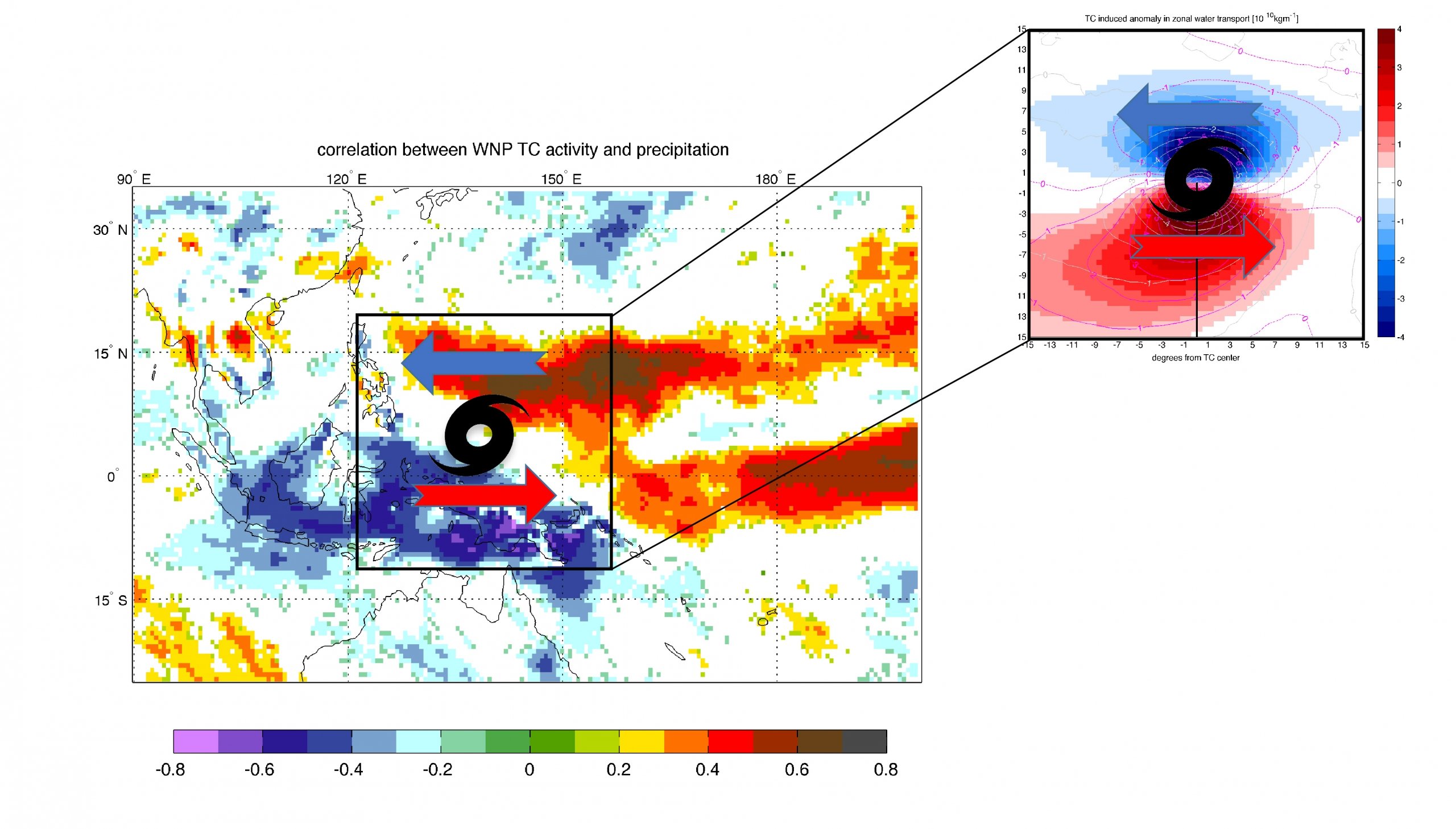
Tropical cyclones in the North West Pacific can dry the archipelagos of Southeast Asia, as they reduce humidity in the area with their associated winds. A new study of the CMCC Foundation shows causes and implications of this relation.
Tropical cyclones are important players within the Earth’s climate system. While literature usually investigates their role in determining flood events and inducing precipitations, a new study led by the CMCC Foundation – Euro-Mediterranean Center on Climate Change points out for the first time that they can also create drying effects in other regions, due to induced zonal wind anomalies.
Through observational data for the period 1979-2015, the study shows that tropical cyclones in the West-North Pacific not only increase precipitations in the areas where they transit from June to August, but also decrease precipitations in the Maritime Continent – the region between the Indian and Pacific Oceans including the Southeast Asian archipelagos – that is not directly affected by typhoons. This is explained by an eastward water transport anomaly in the equatorial region of the North West Pacific, induced by tropical cyclones developing in the basin.
“Tropical cyclone-associated winds that move around its centre reach 200-300 km/h. Winds move not only the air mass but also the water present in the air mass itself and they can involve an area of about 10.000 km from the centre of the cyclone”, explains Dr. Scoccimarro, senior researcher at the CMCC Foundation under the Climate Simulation and Prediction Division and principal investigator of the study. “In a tropical cyclone winds spiral towards the center in a counterclockwise direction in the Northern Hemisphere. Therefore, in the southern part of the cyclone, the vertically integrated water content is moved to the East, while in the northern part of the cyclone water is moved to the West”.

Correlation between the activity of tropical cyclones and precipitation over the region (left) and the reason behind: the tropical cyclones-induced meridional water transport (upper right, where red represents an eastward water transport and blue represents a westward water transport).
The eastward water transport anomaly is responsible for moving to east the water that would belong to the air column of the Maritime Continent, thus reducing the humidity of the area: the result is that in years with most tropical cyclones, the Maritime Continent is dryer.
The findings were confirmed by numerical experiments using the high-resolution General Circulation Model developed by the CMCC Foundation (CMCC-CM2-VHR4). “Using one of the three models in the world able to resolve intense typhoons, thanks to its high horizontal resolution of 25km in both atmosphere and ocean components” explains Scoccimarro “we could exclude other external factors potentially interacting with both tropical cyclone activity and Maritime Continent precipitation, such as El Nino Southern Oscillation”.
The study highlights that forecasting tropical cyclones activity in advance over the West North Pacific may help in forecasting the onset and duration of the dry season over the Maritime Continent, thus helping to improve the forecasts for all the processes associated with the circulation in the area. This has important implications, as the Maritime Continent plays a role in the global circulation pattern, due to the energy released by convective condensation over the region which influences the global atmospheric circulation.
Future works will examine whether the tropical cyclones-induced drying over the Maritime Continent might also apply to cyclones in other basins.
The paper, just published on the Proceedings of the National Academy of Sciences (PNAS), is entitled “The typhoon-induced drying of the Maritime Continent”. Authors are Enrico Scoccimarro, Silvio Gualdi, Alessio Bellucci, Daniele Peano (CMCC Foundation), Annalisa Cherchi (Istituto Nazionale di Geofisica e Vulcanologia – INGV), Gabriel A. Vecchi (Princeton University, New Jersey) and Antonio Navarra (CMCC Foundation). DOI: 10.1073/pnas.1915364117


